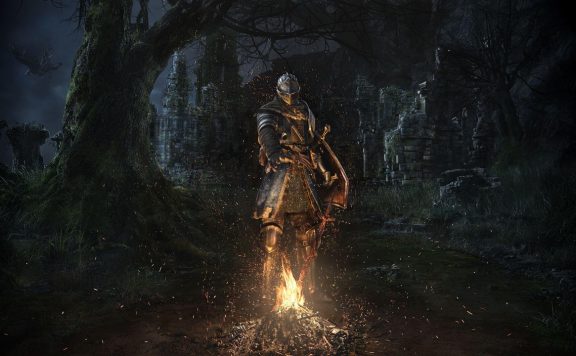It’s been 16 years since the incredible Portal dropped into the gaming landscape, and since then we’ve had dozens of imitators – some fantastic, some not so much. Those that fall into the former category are easily identifiable by their ability to not only give us smart, funny first person puzzles, but also a unique twist at the same time. Superliminal and Supraland spring to mind for me, and now I have another one to add to that list; Maquette.
Maquette‘s big hook is in the name, though if you’re unfamiliar with the meaning it may be lost on you to start with. A maquette is a small scale model of a much larger proposed piece of art, often used to find and solve issues that may arise when building the bigger version. It’s an incredibly handy tool for real world artists and designers, but in Maquette, due to being a digital puzzle title, these creations take on an even bigger (or smaller) role.

Take the first area for example; in front of us is an ornate domed building with four off-shoot areas, each with different themes and constructions. It’s not long before we realise that this diorama is actually a miniature version of the dome we’re standing in, and walking outside reveals the same four areas coming off of it. Looking even further, we can see this repetition go on almost infinitely into the distance, as well as infinitesimally smaller within the dome on the table.
It’s an incredibly smart hook, and one that is instantaneous in its effect. It’s not long however before we need to stop marvelling and actually try and solve some puzzles.

Graceful Decay have lined up the perfect first test too. A giant red block prevents us from going in the only open area, and is far too heavy to move. However, heading back to the Maquette on the table reveals a smaller version that can be picked up and placed out of the way. Turning round reveals the giant block is now where we moved it to, and we can progress.
Side note; one thing to try and really show off this effect is to take the block and lift it as high as you can before dropping it. Not only will it thud down behind us but there are also slightly delayed thuds as the even larger versions further out gradually hit the ground. This never got old.

From here, Graceful Decay really make clever use of the mechanic, from simple bridge placement to resizing items or even venturing out into the larger areas, effectively shrinking us in the process. One section involving a set of movable stairs really impressed with not only the use of size but also orientation.
The first handful of areas all expand wonderfully on the concept, not necessarily getting harder but offering something different enough to give us pause to think. Later areas turn the mechanics on their head in ways best left discovered, before a rather wonderfully paced final area sends us home happy.
Well, as happy as can be considering the tale of Michael and Kenzie. In between the puzzles we get to follow the highs and lows of their relationship, from first meeting to the realities of living together and more. While it starts off a bit flat and overly cheesy, by the end I must admit I was enjoying the interludes and was quite invested in the tale.

These scenes are helped by some incredible artwork that reflects the moods of the the protagonists, as well as some utterly brilliant musical accompaniment. Topped off with those stunning rendered environments that reflect changes across the board in real-time, and we have a game that’s almost as good looking as it is smart.
The only real downer on things here were a handful of bugs I encountered thorough the 5-ish hour playthrough. Some were one offs, such as puzzle elements glitching through the floor, while others were a bit more consistent. When we’re holding items to interact we can zoom them in and out as well as rotate, but I did find they were easily stuck on scenery or even the floor occasionally, which made movement a bit awkward. One late puzzle in particular required some fairly precise placement and I only got past it in the end by exploiting the physics a little bit.
Thankfully these little hiccups were not prevalent enough to ruin the game though, and I soon forgot about any issues once the next puzzle was in front of me.
Conclusion
Maquette has utterly wowed me these past few nights, with an excellent concept realised brilliantly. Graceful Decay make smart use of the time allotted to a playthrough, and keep things fresh and interesting throughout. That even the story got me properly hooked is a testament to Graceful Decay, and as such Maquette comes highly recommended indeed.




